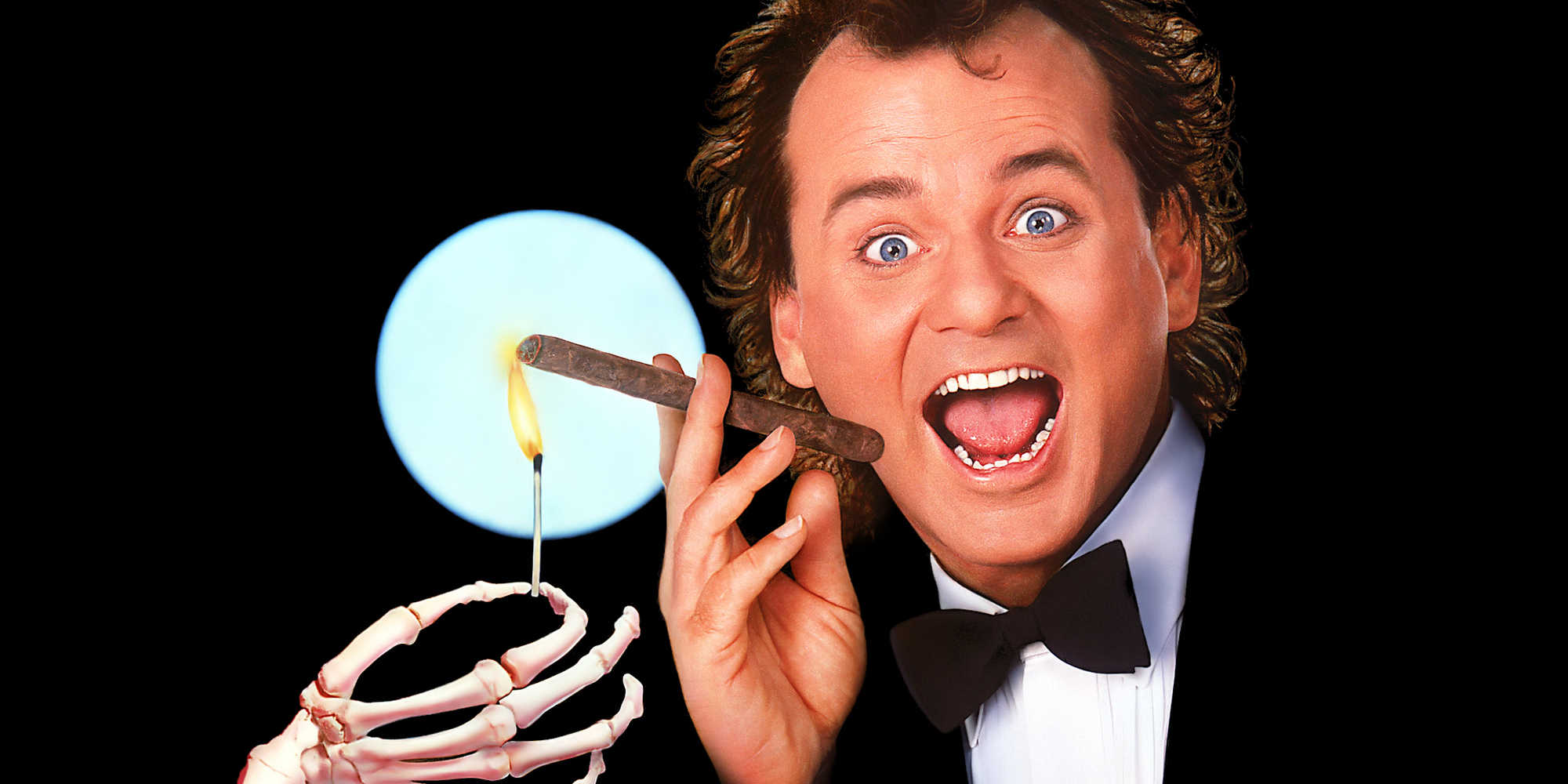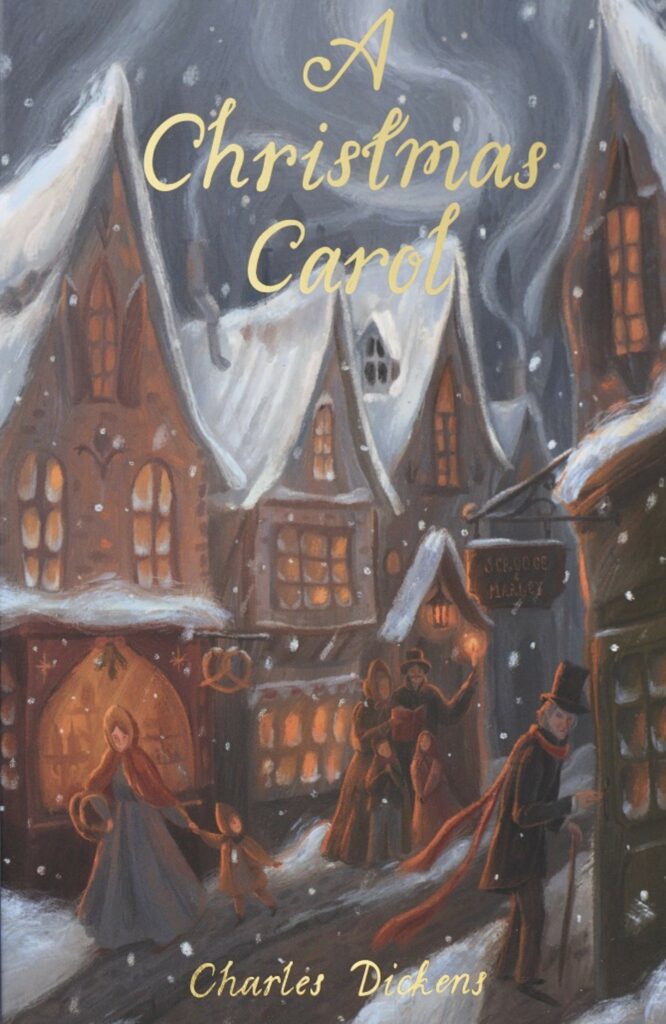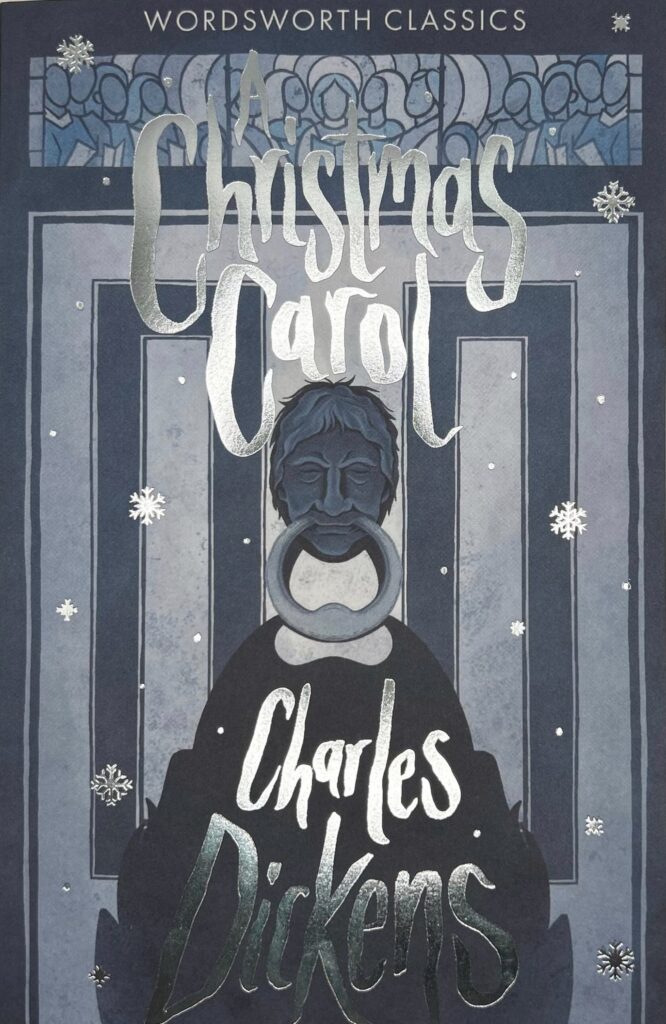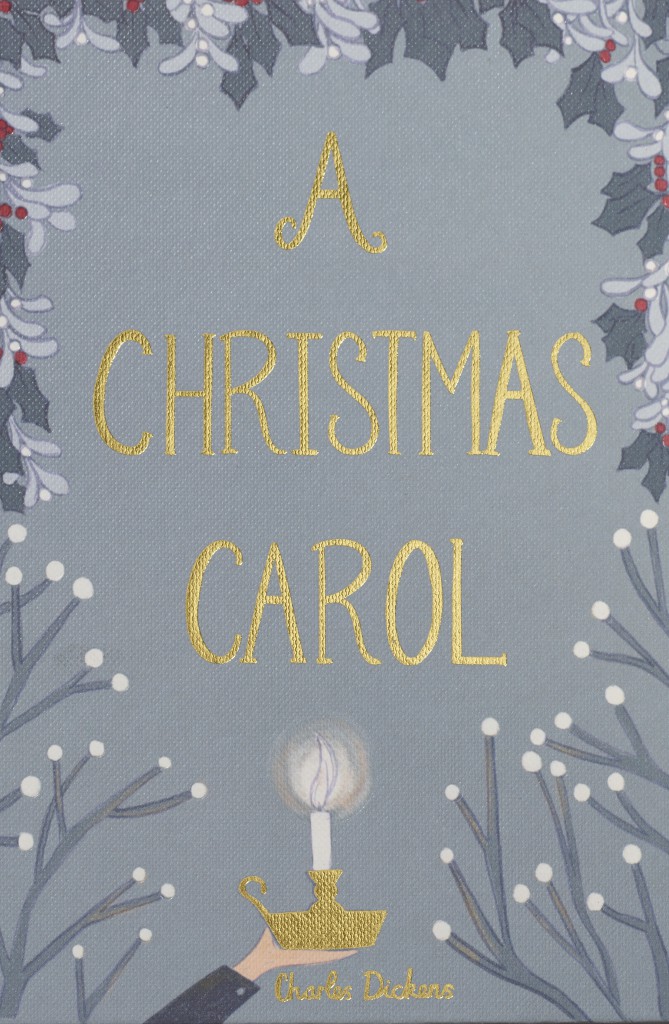
“Bah!” said Scrooge, “Humbug!”
‘Bah, Humbug’…. Parker Lancaster presents The Christmas Curmudgeon’s Guide to the Three Least Heartwarming Versions of A Christmas Carol.
For the cynics among us, Christmas can be a…complicated time of year. Sure, the festive atmosphere is fine, I guess. The eggnog and Christmas Eve tamales are nice. Pilar certainly makes a killer tamal, especially the pork ones. She makes them and seasons them just right, with more filling than masa. Once in a great while, where I live at least, nature graces us with a blanket of snow, or at least a 100 thread count top sheet of snow, which I guess is pretty magical or whatever. The Black Friday sale is pretty good, too, especially for stocking up on cheap presents for yourself (don’t even try to be outraged, we all do it, even you….I saw what you did on Black Friday, Paul). And of course, the pièce de résistance, that fat stack of juicy presents under the tree from everyone’s favourite old Christmas trespasser, Santy Claus, and his cadre of mercilessly horsewhipped and abused magical flying beasts of burden (I’m sure the ASPCA would be very curious to examine the reindeer’s stables and living conditions up there at the ole North Pole).
As a practising celebrant of not only Christmas but also Festivus, I’m obliged at this time of year to perform the Airing of the Grievances. It’s time to put my foot down on this Christmas humbug. The whole holiday is all just so….cheerful. So wretchedly merry, so disgustingly cutesy, and usually in a painted-on, plasticky way. Beneath the paper-thin façade of seasonal joy lies a hollow, empty ocean, a gaping black maw of nothingness. It’s as though a month-long season of a handful of holidays can mask another year of failures and disappointments in our friends, our family, our governments, and most of all, in ourselves. Nowhere is this bizarre phenomena of denial, rationalization, and compensation more apparent than in our Christmas media.
Every December we are swept away by a flood of Christmas songs, the same old songs we’ve heard 10,000 times over, covered over and over and over and over again by every pop star, boy band, Youtube a cappella group, rock band, drunken barroom crooner, and elementary school choir in the Western world. On film and television, we’re forced to endure an unbearably relentless cavalcade of sweepy, weepy, happy, sappy, faith-affirming, life-affirming, and maudlin stories, a revoltingly positive avalanche of heartwarming and tenuously defined “family values.” From a scientific perspective, there is a serious problem with such heartwarming entertainment. You see, the body is medically in a state of fever at just 100.4 F, or 38 C. Our corporeal forms literally cannot tolerate much heartwarming until we become physically ill, and seriously so.
Considering that Charles Dickens’s “A Christmas Carol” is the single most popular Christmas story in all fiction, it has naturally fallen victim to many a heartwarming adaptation on the screen over the years. Some of these versions have been quite heartwarming indeed, often veering dangerously into the fever zone, inciting such symptoms as flushing, elevated blood pressure, heart palpitations, dizziness, nausea, profuse sweating, vomiting, and instant, painful, and extremely permanent death. Sometimes I get tired of the same old story. After watching over a dozen versions of the story, you’re sick to death of Tiny Tim and his Christmas blessings.
Sometimes, when I’m alone with my thoughts and no one is looking or listening, Evil Me wonders what it would be like for poor little Tiny Tim to finish out the story by croaking out “God is dead!” before keeling over in a fatal coughing fit. Evil Me wants to see Mrs Cratchit’s Christmas pudding turn out into a rancid, brandy-soaked flaming disaster that makes everyone cry. Evil Me wants Scrooge to immediately backslide on December 26th, and mosey on down to the nearest child slavery workhouse to hand out Ayn Randian proto-Objectivist pamphlets to the children with the title, “You Deserve This, or: 40 Good Reasons Your Parents Abandoned You and You Should Be Grateful For This Opportunity To Be Useful” with a nasty Cheshire cat grin on his face. But there are three adaptations of “A Christmas Carol” that I hold close to my coal-black heart during this unforgivably jolly and gay time of year, three versions that darken my fireplace and elicit an involuntary and dimly lit sinister grin in me. And so I present the Christmas curmudgeon’s guide to the three least heartwarming versions of “A Christmas Carol,” and its hero, Ebenezer Scrooge.
The BBC’s “Blackadder’s Christmas Carol” from 1988 is delightfully cynical, sardonic, and sarcastic, and completely flips the Dickens tale on its head. Rowan Atkinson stars, once again, as Ebenezer Blackadder, “the loveliest man in all England,” a significant departure from all his deliciously evil and awful Blackadder ancestors and relatives. His Scrooge does indeed live very frugally, but not out of greed. Blackadder is practically destitute to the point of hunger because he is ruinously generous to his local charities and fellow citizens. He gives away his literal last penny, as well as his own Christmas turkey, a bowl of nuts, and all of his own gifts. He’s so magnanimous and munificent that everyone not only takes advantage of him but openly mocks him for it.
He is visited by one consolidated Spirit of Christmas, played by Robbie Coltrane, who ostensibly visits him to show him the value of his good deeds (but is really only there to drink Blackadder’s stash of whiskey). Blackadder is shown visions of his horrible ancestors, who trick and connive and lie their way to great wealth, favour and success. He sees two competing visions of his future: one where he succumbs to greed and power and becomes emperor of the universe, and another where he becomes a half-naked slave boy. He learns from his supernatural visitation that the greedy, cunning, and unscrupulous are those who truly prosper and succeed, or as he plainly states, “It points to the very clear lesson that the bad guys have all the fun!” And so he becomes the Scrooge we all know and love. Or hate. Whichever. Ice cold.
Blackadder’s Heartwarming Ability: -2 C/ -3.6 F
The next entrant on the list comes from the unlikeliest of places, the multinational greeting card giant Hallmark Cards. In 1986, artist John Wagner created a surly, sarcastic, and utterly amazing character named Maxine for the brand’s more daring “Shoebox Greetings” division. Though she began as a humble greeting card character, Maxine, the crabbiest old cooter west of the Mississippi, and her trusty ole pooch Floyd have evolved into veritable greeting card royalty. She’s a TV movie star, an off-broadway hit, and you can currently purchase her likeness spouting irreverent wisdom in a host of household products, including cards, fridge magnets, calendars, mugs, tree ornaments, tote bags, and more. Following a faithful and relatively big-budget, live-action, period-accurate adaptation of “A Christmas Carol” in 1999 starring Patrick Stewart, Hallmark Entertainment revisited the story in 2000 as a low-budget animated short film starring voice acting legend Tress MacNeille (of “The Simpsons” and “Futurama” fame, and countless others) as Maxine in the remarkable and highly uncharacteristic film “Maxine’s Christmas Carol.” To understand why this film is special, a brief explanation of the Hallmark Channel and its production studio Hallmark Entertainment are in order.
Hallmark Channel needs to be stopped, to begin with. There is no doubt whatever about that. If it were a person, it would need to be institutionalized and mercilessly sprayed down daily with a fire hose. It is currently infamous for its tradition of an annual tidal wave of sickeningly wholesome and inspirational and hopelessly derivative Christian-themed Christmas movies. To give you an idea of the sheer scope and scale of their Christmas onslaught, Hallmark Channel has made ONE HUNDRED THIRTY-SIX Christmas-themed TV movies since 2008. Their holiday film addiction has escalated so much that they made TWENTY-ONE new films in 2018 about Christmas alone. These films are almost exclusively romantic comedies starring grown-up sitcom child actors and washed-up pop singers with botox, bleached teeth, $400 haircuts, and, I assume, exponentially mounting gambling debts. TRIGGER WARNING: Here is just the faintest little sampling, nay, a mere hors d’oeuvre of just this year’s Christmas offerings: “A Gingerbread Romance,” “Jingle Around the Clock,” Mingle All the Way,” “Christmas Made to Order,” “Christmas in Love.” I could list them all, but I choose not to, because it’s better for everyone this way.
This is why “Maxine’s Christmas Carol” stands out so much today. It’s remarkably weird, hilarious, and kind of not really for kids at all, despite all appearances. Maxine has some essential Scrooge traits: she’s antisocial and a total sourpuss, especially around Christmas. But she isn’t rich, or a miser. She’s actually a good person who defends the weak and can’t stand bullies. She hates Christmas for its shallowness and commercialism. She opts to spend Christmas alone with her dog and some frozen burritos, and she hates overpriced Christmas-themed coffee. She cracks all kinds of edgy and borderline inappropriate jokes about sex, fat former lovers, her sagging breasts, flipping the bird, and alien anal probes. She’s disgusted to see “It’s a Wonderful Life” on TV instead of old kung fu movies. This film is oddly self-referential and even ventures into commentary on American politics and driving insurance rates. Best of all, after Maxine’s ghostly visits, she does have an epiphany and make a change, but it’s infinitely more subtle than Ebenezer Scrooge. Rather than radically change overnight and become an entirely different person, Maxine simply decides to attend a Christmas party for her new friend Billy, and to become a nicer person only on Christmas. She asserts, “I’ll give ‘em Christmas, but the other 364 days are mine to be as crabby as I want!” It’s refreshing to see such honesty and character restraint. It’s also worth noting that a modified version of this story, also titled “Maxine’s Christmas Carol,” has been performed as a stage show in Branson, Missouri, starring Cathy Barnett as Maxine.
Maxine’s Heartwarming Ability: Neutral
At last we come to what is by far the greatest, most beautiful, most epic holiday-themed film ever set to celluloid. No, it is not “It’s a
Wonderful Life,” “How the Grinch Stole Christmas,” John Carpenter’s “Halloween,” or “A Christmas Story.” It’s probably not any film you’re thinking of, because my opinion is in the minority (but it is also correct, while yours is incorrect). I speak, of course, of Richard Donner’s masterful “Scrooged,” starring Bill Murray, who is the best thing since the discovery of penicillin, and written by Mitch Glazer and Michael O’Donoghue, two of Murray’s favorite writers from his “Saturday Night Live” tenure.
“Scrooged” is absolute gloriously irreverent film adaptation perfection. It respects its source material in spirit but not in letter. It captures the essence of “A Christmas Carol” entirely, but with a cynical late 20th-century twist full of raw honesty, social commentary, politically incorrect humour, zombies, nipple slips, and laugh-out-loud ridiculousness about the absurdities of modern life and media at literally every turn. “Scrooged” is, in many ways, an unfaithful film. It’s completely metafiction, and totally tongue-in-cheek. It’s an adaptation of the novella, about a TV executive who is producing a film about the novella, and the film’s story closely mirrors the story they’re rehearsing and filming at every turn. None of the character names matches up, some characters are consolidated or split up, and plot points are dropped, moved, or mixed around, but Bill Murray’s Frank Cross is undoubtedly a modern Ebenezer Scrooge. If the film has any flaw that I can see, it’s that it makes his romance with his lost love a major story element, which occupied all of two pages of the novella, but the love story here is done so well and played so convincingly by Murray and Karen Allen that it’s entirely forgivable.
The production of “A Christmas Carol” that Frank is working so hard to bring to fruition throughout the film deserves some discussion. It is a fever pitch of hyperbloated, big-budget TV hysteria, to rival the Super Bowl of the 2010s. Inexplicably called “Scrooge” instead of its actual title, this film, if it were actually to be made, would be, by far, the most ridiculous, absurd, bloated, and overcooked monstrosity that television had ever produced. It’s a $40 million live TV production (or $83 million in 2018 dollars), telecast from New York City, Bethlehem, Helsinki, the Great Barrier Reef, and featuring a live mass-baptism of the entire Zulu nation by the Pope (certainly uninvited and highly racially questionable). This laughably misguided television abortion features John Houseman narrating the Solid Gold Dancers, scantily clad and dancing in London’s freezing winters to hip hop musical numbers and Olympic gold medalist, Mary Lou Retton, as Tiny Tim, who instantly casts off his crutches and vaults into a somersault and a fancy 360 backflip. I could die happy if I ever saw this interpretation of Dickens’s story. Not only was a $40 million live TV film bombastically absurd at the time, but even today, the most expensive TV show is “Game of Thrones” at around $15 million per episode. The shooting script differs a bit from the film in the occasional scene that’s missing from the film, but most notably for its explicit casting of Marlon Brando as Scrooge, and Chuck Norris as Santa’s flamethrower-toting saviour in one of the network’s ultraviolent Christmas movies. One assumes that most of the budget would have gone to Brando so that he could buy the tropical island adjacent to his.
If this bizarre version of “A Christmas Carol” were to be shown on an American network today, it would likely be even more ridiculous than was predicted in the film. Not only would a dazed Gary Busey play Scrooge, with an army of washed-up celebrities from reality TV filling out the cast, but Tupac Shakur’s hologram would fill in all the scene gaps with performances of every song from his latest undiscovered album. There would also be a “Dickens Blowout Bash” halftime show after the third stave, featuring Jay Z, Justin Bieber, Drake, Post Malone, and Ed Sheeran in frock coats, sideburns, and mustachios, and Taylor Swift, Nicki Minaj, and Adele in bonnets and lace-bedecked bell dresses. With special appearances by Cirque du Soleil and Toto, performing “Africa” for no apparent reason, and David Copperfield with a special magic act where he makes all of Damien Hirst’s pickled sharks disappear (arguably the man to beat for the Guinness record for the world’s largest gefilte fish), much to England’s relief.
In “Scrooged,” Bill Murray takes an already wonderful script and makes it his own. He ad-libs dozens of jokes that make up most of the best comedy in the film. This film could never be made today, with its politically incorrect humour, and especially due to the character Eliot’s transformation from a fired, depressed employee into a psychotic, murderous would-be workplace serial killer at the urging of Murray during an extreme bipolar manic episode. A film like this will never be made again, and I understand why and love it all the more for its flaws and as a product of its time. But Frank Cross’s manic televised revelation at the end of the film about the true meaning of Christmas, and the value of love and generosity to mankind, is genuinely affecting. Director Richard Donner thought Bill Murray transformed from a comedian into a genuine dramatic actor in his performance of the last scene of the film: “Billy really became an actor to me during Scrooged. I had always thought of him as an entertainer. Now, having worked with him, I could see him playing a heavy.” Bill Murray went on from “Scrooged” to deliver many great performances that were both dramatic and comedic, from “Groundhog Day,” to “Rushmore” to countless others.
Bill Murray’s Heartwarming Ability: 1 C/ 1.8 F
And so, dear friends, I conclude my curmudgeonly review of the least heartwarming film and TV adaptations of Charles Dickens’s “A Christmas Carol.” All three of these versions happen to be outright comedies, which are certainly outliers for the totality. There truly is a Scrooge for every mood, and I have plenty of love for many different kinds. These sarcastic and sardonic Scrooges are certainly more on my wavelength, but I don’t begrudge those who prefer the more vanilla Scrooge. I kinda like that guy, too, even after his Christmas epiphany and transformation into a nice guy.
May it be said that both you and I can always keep Christmas well if anyone possesses that knowledge. May it be said not just of us, but all of us. And as Tiny Tim observed, God bless us, all of us!
………….Just kidding.
Books associated with this article

A Christmas Carol
Charles Dickens

A Christmas Carol
Charles Dickens
